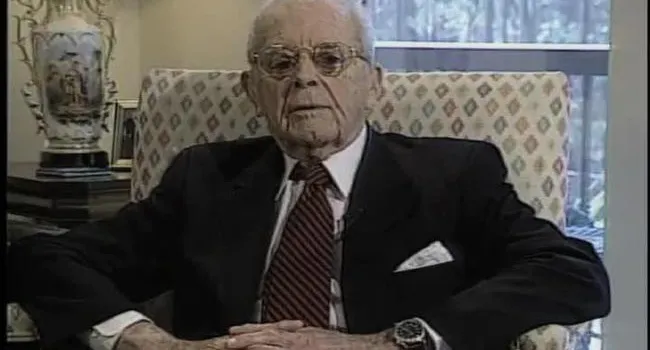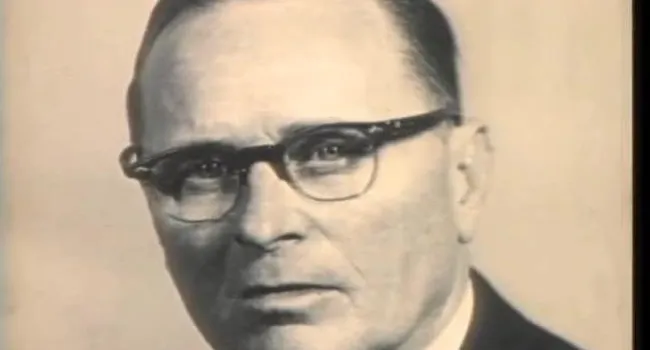Elizabeth Timothy ( - 1757)
Elizabeth Timothy is recognized as America's first female newspaper editor and publisher and one of the world's first female journalists. She performed these roles with distinction, given her additional responsibilities as mother, homemaker, and widow.
The accidental death of her husband, Lewis Timothy, publisher of the South-Carolina Gazette, forced her not only to carry on his work but to fulfill the remaining years of a six-year contract Lewis Timothy had entered into with Benjamin Franklin, who sponsored the Timothy family's venture in South Carolina.
Louis Timothée and his family were among a group of French Huguenot immigrants from Rotterdam who arrived in Philadelphia aboard the ship Britannia of London in 1731. Named on the ship's roster were Louis and four Timothée children: Peter, Louis, Charles, and Mary, ranging in age from 1 to 6. Although Elizabeth Timothée's name was not on the roster, she undoubtedly accompanied the family.
They settled in Philadelphia, and Timothée, a master of the French language, advertised his services as a tutor of French in Benjamin Franklin's Pennsylvania Gazette. At the time, Franklin was entertaining the idea of establishing a foreign-language newspaper for the increasing German population around Philadelphia and, apparently impressed with Timothée, persuaded him to become the first editor of the Philadelphische Zeitung. Issues appeared on May 6, 1732, and on June 24, 1732, but none thereafter. Timothée next became librarian of another of Franklin's projects, the Philadelphia Library Company, and a journeyman printer at Franklin's Pennsylvania Gazette.
At the time, Franklin encouraged competent printers for his Gazette to become publishers and printers in other colonies. One was Thomas Whitmarsh, who was sent to Charles Town to establish the South-Carolina Gazette. Not long after the paper began publication, Whitmarsh died of yellow fever and Timothée was persuaded to take his place.
Franklin and Timothée entered into a six-year business agreement whereby Franklin furnished the press and other equipment, paid one-third of the expenses, and was to receive a third of the profits from the enterprise.
Timothée revived the South-Carolina Gazette in 1733. The following year, his wife and children joined him in Charles Town, where they became members of St. Philip's Anglican Church. Timothée also helped organize a subscription postal system originating at his printing office and, in 1736, obtained a land grant of 600 acres and a town lot in Charles Town.
The early issues of the Gazette listed Louis Timothée as the publisher, but he soon anglicized his name to "Lewis Timothy." Such a practice was customary among many Huguenot immigrants hoping to increase their chances of social and business acceptance.
When Timothy died during the Christmas season of 1738, a year remained on his contract with Franklin, which provided for Timothy's son, Peter, to carry on the business until the contract expired. Because of her son's youth, Elizabeth Timothy assumed control of the printing operation and published the next weekly issue of the South-Carolina Gazette. The publisher, however, was listed as Peter Timothy.
In the first issue of the Gazette, Elizabeth Timothy informed readers that it was customary in a printer's family in the colonies and in Europe for wife and sons to help with the printing operation. So it isn't surprising that Elizabeth was able to continue the work of her husband, with the help of her son Peter, then only 13 years old.
The printing process in those days was extremely labor-intensive. Type was set by hand, a letter at a time, in a hand-held composing stick. The type was locked into a form, or chase, and placed on the press. The type was inked before each impression, and printed a sheet at a time on a century-old press.
Elizabeth Timothy, official printer for the province, printed acts and other proceedings for the Assembly. In addition to the Gazette, she printed books, pamphlets, tracts, and other publications. The colophon "Peter Timothy" appeared after each. However, she no doubt made most of the decisions in the operation of the business.
Years later, in his autobiography, Franklin described Timothy as "a man of learning, and honest but ignorant in matters of account; and tho' he sometimes made me remittances, I could get no account from him, nor any satisfactory state of our partnership while he lived." On the other hand, he had only praise for Elizabeth Timothy.
When Peter Timothy turned 21 in 1746, he assumed operation of the Gazette, and his mother opened a book and stationery store next door to the printing office on King Street.
In a Gazette ad published in October 1746, she announced the availability of books such as pocket Bibles, spellers, primers, and books titled Reflections on Courtship and Marriage, Armstrong's Poem on Health, The Westminster Confession of Faith, and Watts' Psalms and Hymns.
She also offered bills of lading, mortgages, bills of sale, writs, ink powder, and quills—all very cheap!
She operated her shop for about a year, but during that time she advertised in the Gazette that she planned to leave the province and asked that anyone who owed money to her or to her husband's estate settle their debts within three months.
It is unclear when she left Charles Town or where she made her new home. But by 1756, she had returned to Charles Town and, on April 2, 1757, she wrote her will and died within a month.
Peter Timothy was among the most widely known Southern journalists of the 18th century. He was politically active and his newspaper was always on the side of freedom and liberty. He carried on the publication of the Gazette continuously as publisher or proprietor until 1775. It was suspended from 1775 to 1777, when it was again published by him until the fall of Charles Town in 1780. Timothy and 28 other prominent Whigs were exiled in St. Augustine and their families exiled in Philadelphia. The prisoners were later sent to Philadelphia in exchange for British prisoners and there were reunited with their families.
Rather than starting over in Charles Town, Peter Timothy decided in 1782 to explore the possibility of settling in Antigua. However, during the voyage, his ship sank in a gale off the Delaware capes, and everyone on board drowned.
Peter's wife, Ann Donavan, returned to Charles Town and resumed publication of her husband's newspaper on July 16, 1783, in a house on Broad Street that exists today. Nine years later, she was succeeded as publisher by Benjamin Franklin Timothy, her son and Elizabeth Timothy's grandson.
As the wife of a wealthy and influential publisher, Elizabeth Timothy enjoyed a social position attained by only a few women printers of the colonial period. But the success of the newspaper and printing business after Lewis Timothy's death can only be attributed to Elizabeth Timothy's business acumen and management skills.
As the first woman in America to own and publish a newspaper, she played a vital role in the development of Charles Town and South Carolina. As official printer to the colony, she was closely associated with the South Carolina Assembly and the colony's government. And as the proprietor of a commercial printing business and bookstore, she printed, published, and offered for sale numerous books and pamphlets, and was at the center of the colony's cultural and literary life.
Elizabeth Timothy was inducted into the South Carolina Press Association Hall of Fame in 1973. A plaque recognizing her unique role in South Carolina business and journalism occupies a spot "on the bay near Vendue Range," where she last served as publisher of the South-Carolina Gazette.
She was inducted into the South Carolina Business Hall of Fame in 2000.
© 1999 South Carolina Business Hall of Fame












